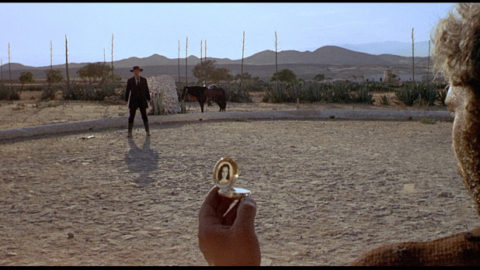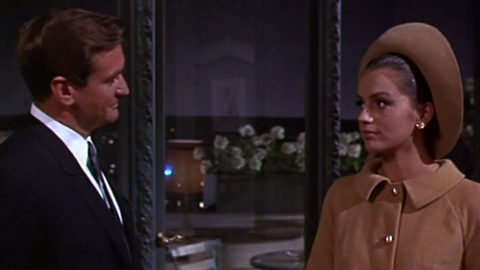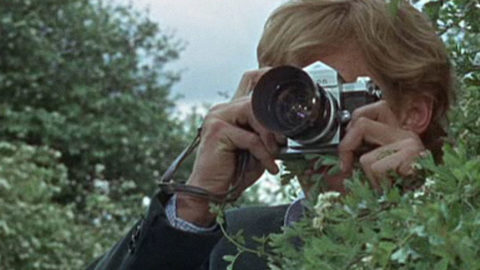Cinema ’67 Revisited: Persona
In my 2008 book Pictures at a Revolution, I approached the dramatic changes in movie culture in the 1960s through the development, production, and reception of each of the five nominees for 1967’s Best Picture Academy Award: Bonnie and Clyde, The Graduate, In the Heat of the Night, Guess Who’s Coming to Dinner, and Doctor Dolittle. In this biweekly column, I’m revisiting 1967 from a different angle. As the masterpieces, pathbreakers, and oddities of that landmark year reach their golden anniversaries, I’ll try to offer a sense of what it might have felt like to be an avid moviegoer 50 years ago, discovering these films as they opened.
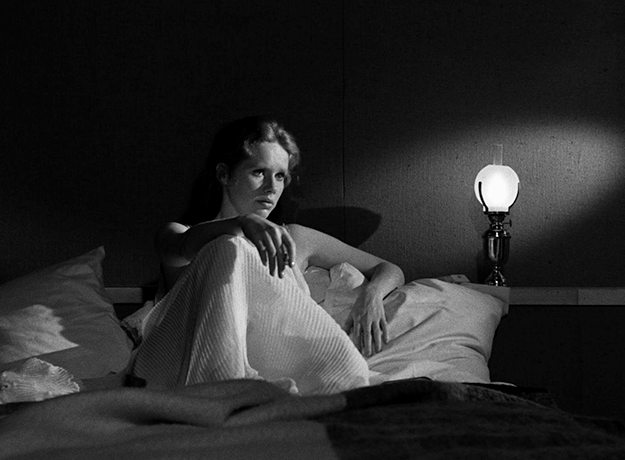
Some directors are eager to help shine a light on the meaning of their work, especially if that work tends to bewilder audiences. Ingmar Bergman was not one of those directors. On Apr. 2, 1967, one month after his film Persona opened at New York City’s Festival Theater on West 57th Street, an interview with the New York Times ran in which he said, “I can’t talk to you about Persona at all. It’s finished, over. If you find meanings in it, fine. I’m grateful, but it has no interest to me anymore.” He smiled and added, “Besides, won’t Persona have disappeared before your article appears?”
He wasn’t far off the mark. Despite ecstatic reviews that hailed the movie as a breakthrough for an already acclaimed director—Bergman himself called the film “opus 1, the beginning of a new phase” for him—Persona grossed just $250,000 in the United States, a poor performance at a time when audiences would routinely line up for difficult art-house imports by directors from other countries. Several years earlier, Alain Resnais’s Last Year at Marienbad had grossed that much at just one Manhattan theater. Many critics had compared Persona to Resnais’s film, as well as to Michelangelo Antonioni’s L’avventura and to Blow-Up, which had opened a couple of months earlier. But Persona, a fiercely cryptic, black-and-white, 83-minute meditation on female identity, personality, and sexuality, proved to be too much for even discriminating audiences. Not even a rhapsodic essay from Susan Sontag in Sight and Sound or a ringing endorsement from the members of the National Society of Film Critics (which eventually awarded it Best Picture, Director, and Actress (for Bibi Andersson) over Bonnie and Clyde and The Graduate) could get people to theaters.
To understand why, it may help to know that in 1967, as strange as it now sounds given the work that was still to come, many cinephiles thought Bergman was, at 48, over the hill. He had been America’s great foreign-film discovery a decade earlier, and initially every one of his new movies released stateside—Smiles of a Summer Night, Wild Strawberries, The Seventh Seal—was a conversation piece and a hit. But in the early 1960s, his work had taken a turn toward the impenetrable and austere. Three thematically linked movies that Bergman himself sometimes claimed and sometimes denied constituted a trilogy—the Oscar-winning Through a Glass Darkly, Winter Light, and The Silence—alienated moviegoers, and critical acclaim started to mix with dissent and weariness from some who saw him as a joyless, punitive obscurantist. By the time Persona arrived it had been almost three years since American audiences had seen a Bergman film, and even he seemed to know he was suddenly an elder statesman, the victim of a shift in the conversation. “What have you heard of the new Fellini?” he asked a reporter. “What is Truffaut planning? How is the new Godard?”
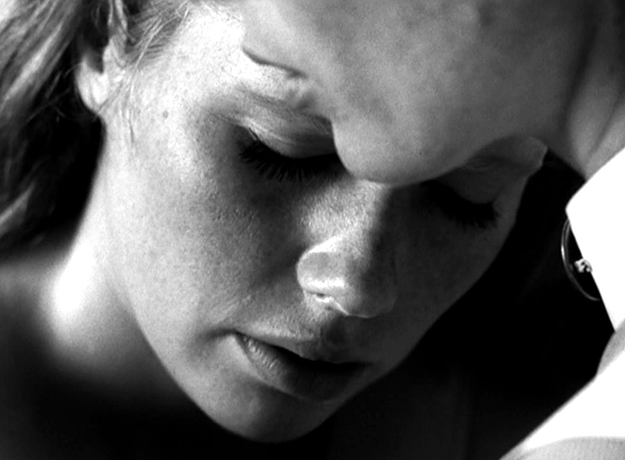
Even though it wasn’t a hit, Persona, his 27th feature, put him squarely back in the critical conversation. Bergman had conceived the movie during a long and agonizing hospitalization for a persistent infection and, according to some accounts, an accompanying emotional collapse, and the work that resulted seems filled with disease and a sense of dread and self-endangerment. It’s the story of two women—a successful actress (Liv Ullmann, working with Bergman for the first time) who has a nervous breakdown that renders her mute, and a nurse (Andersson) who either aids in her recovery or vampirically steals her identity…assuming she even exists. Some saw the movie as a struggle between two women, others as a struggle between two sides of one woman. For certain critics, Persona was a breakthrough in terms of its sexual frankness, from the near-subliminal shot of an erect penis in the opening sequence to a centerpiece monologue about an orgy recounted in explicit terms. Others saw it as Bergman’s first overtly political movie, extrapolating much from one short scene in which Ullmann’s character reacts to the televised news report of a Southeast Asian monk’s self-immolation. Some, like John Simon (who wrote in a rave that after two viewings, “I still cannot be sure I understand it”), felt the breakthrough was visual (“Sven Nykvist’s cinematography—I think black-and-white photography can achieve no greater heights—manages to abolish the boundaries between dreaming and waking.”). While for others, including the Bergman scholar Marc Gervais, the movie constituted the first major piece of art in what he called “the era of deconstruction”; much was made of the formally explosive moment in which Bergman allows the film to literally break.
Fifty years ago, critics and audiences seemed endlessly willing to chew over explorations of the nature of reality, “such questions,” to quote one reviewer, “as whether one can really be or only seem,” the issue of whether objective truth could exist, the moral responsibility of the artist, and debates about whether the act of creation is tantamount to being a spiritual vulture, tearing the entrails of identity and experience out of other people in order to nourish oneself. In Persona, they got everything they wanted. As Variety’s critic succinctly put it when he got his first view of Bergman’s Opus 1, “big themes are still his forte.” The severity and rigor with which Bergman attacked these issues and his complete lack of interest in packaging them ingratiatingly for his audience both dates the movie and makes it enduringly fascinating.
Persona opens with an image of film unspooling as we’re all but blinded by the blazing light of a projector; it tells audiences immediately that this is going to be a project about watching, and that what we see may burn us blind. Images flash by us almost teasingly—a primitive cartoon, a spider, an animal being disemboweled, a nail being driven into the palm of a hand, that blink-and-miss it erection, a woman (or boy?) on a slab (or bed?), dead (or sleeping?). None of them feel connected to any other; all of them feel so freighted with significance that you may want to grab a pen before you can begin to discern even the faintest contours of a plot or convince yourself that anyone you are looking at is going to be a character in a narrative, or anything but Lars Johan Werle’s jolting and discordant score. When Andersson enters and an explanation of the story begins, you can feel almost flooded with relief, but Bergman makes sure that any sense of certainty or security you may feel won’t last long. This is a film that demands you watch it closely, take it apart and try to put it back together, bang your head against it, take it on as a project. It is unremittingly stern, and it is not interested in making you feel smarter.
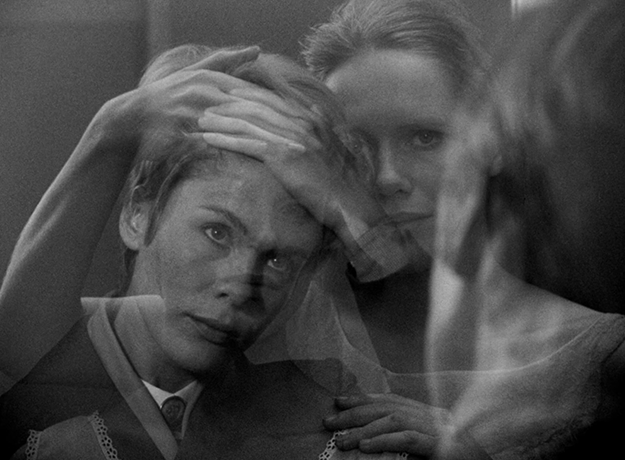
Today, fewer critics might call Persona Bergman’s undisputed masterpiece than did so at the time, but it nonetheless stands as a monument, both to Bergman’s ability to reinvent himself—this proved the start of a lengthy and fruitful period for him in which his centrality to film culture was fully restored—and to a moment at which serious critics became completely committed to making the case that movies could be as great as any other art form. Persona helped bring the still new fields of literary theory and cinema scholarship together; it’s the movie that launched a thousand academic conferences, and to its credit, half a century later, you can still make out what all the fuss was about.
How to see it: Persona is available on DVD and Blu-ray from The Criterion Collection, is intermittently available to stream on Filmstruck, and streams on Amazon and iTunes.
Mark Harris is the author of Pictures at a Revolution: Five Movies and the Birth of the New Hollywood (2008) and Five Came Back (2014).



